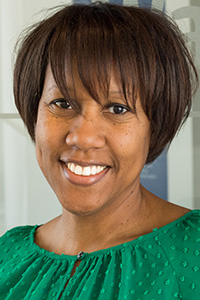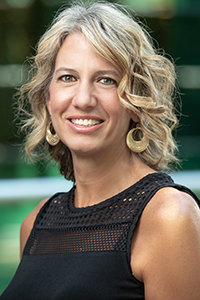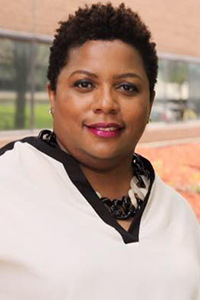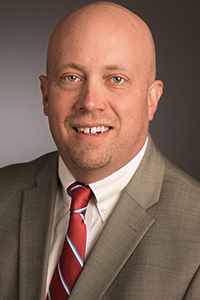United Way organizations are leading and supporting collective impact efforts globally, some since the model was widely introduced in 2011. Ten years later, Ayeola Fortune, interim senior vice president for impact at United Way Worldwide, sat down with Jill Pereira, vice president of education and impact at United Way of the Greater Lehigh Valley in Pennsylvania; Bill Crim, president and CEO of United Way of Salt Lake in Utah; and Regina Greer, chief impact officer at United Way of Greater St. Louis in Missouri, and talked about the challenging shifts that nonprofits and funders face in doing collective impact work, and what it means to become true partners with the communities they serve.
Each of these organizations has applied the collective impact framework differently. For example, in 2014, United Way of Greater Lehigh Valley used the collective impact approach to organize collaborative efforts addressing issues related to education, healthy aging, and food access. As the collaboration progressed, it provided skills development for local collective impact leaders, and began to address human trafficking, recidivism, and suicide prevention. In Salt Lake City, collective impact has brought rigor to key elements of local collaboration; a backbone infrastructure has aligned and coordinated work on eliminating racial and economic disparities in education and health outcomes, and increased data sharing and accountability. United Way of Salt Lake has seen 60 percent of its regional outcomes trending in the right direction for its cradle-to-career collective impact effort. United Way of Greater St. Louis’s collective impact work includes place-based initiatives to improve opportunities for youth in one of St. Louis’s lowest-income areas. It has increased access to early childhood and out-of-school time programs at the local level, as well as achieved state policy changes to provide safe transportation to and from school.

Shifting to a more collaborative approach is not without challenges, as these United Way leaders discussed, but these efforts illustrate how collective impact can affect broader social change. They also point to the success that comes when funders expand their roles to create change alongside the communities they fund.
The conversation below has been edited for clarity and length. Listen to a podcast of the complete discussion and follow this series for new conversations and essays about collective impact.
Ayeola Fortune: What are the challenging shifts you’ve had to make in order to embrace collective impact in your work?
Jill Pereira: The number one challenging shift that we’ve had to make has been to move from pure funder to a collaborative community partner that shares accountability for successful outcomes and a different way of resource distribution. We know that our journey is not over, but seeing ourselves and having our community see us as an organization that’s open to change and willing to operate differently has been critical to this collective impact evolution for us.

In 2018, we put out a request for proposal (RFP), looking for grassroots organizations to support leadership development for residents in the community. We were saying, we want you to develop folks in the community who are diverse, and we want you to refer them to us to put on our coalitions to advance the youth outcomes we think are important. One response we received was: “This question is not grounded in equity and the recognition of the value and work that has been occurring within neighborhoods for generations. Our leadership program is designed to develop liberated and critical thinkers and encourage the linking of emerging and seasoned leaders of color in nontraditional communities with historically white institutions throughout the Lehigh Valley from a place of equity versus submission.” That response came to us from Hasshan Batts, the executive director of a small Black-led, liberation-based grassroots organization, and was really shocking at the time in its honesty and its brave delivery in an RFP to a historically white-led organization.
I reached out to him and said, “Can we sit down and talk?” It’s been such a profound exchange both in our organization and our relationship in the community because we both share the story to demonstrate that when people speak truth to power—and it’s recognized as a gift and you’re leaning in and listening as a partner—really positive and lasting change is possible.

Ayeola Fortune: That’s a great example, Jill, and underscores that this work means giving up and ceding some of your power. Regina, why don’t you talk about the challenges you’ve faced in St. Louis.
Regina Greer: I would reframe this question and make it about an opportunity to holistically and wholeheartedly support the work of collective impact as the soul of our work. At United Way of Greater St. Louis, we have aligned our internal strategy, priorities, assets, and even funding to support collective impact and to see collective impact as a daily goal for our internal and external stakeholders. Dedicated backbone support for both issue-specific and collaborative groups has helped us achieve more than we would if we operated disparate functions within our United Way. Having those dedicated backbone staff has helped provide facilitative and administrative support to other collaborations and helped move their visions into action.
We support collective impact efforts for the issues that are United Way priorities but also use that muscle to help move other collaboratives along across our region.
Ayeola Fortune: It sounds like you addressed the possible challenges by living out the collective impact approach through who you are, what you do, and what you say. If you are going to lead this kind of effort in the community, you need to manifest it within your United Way itself. Bill, how about Salt Lake? What have been the challenges there?

Bill Crim: Our experience is that it’s unusual for organizations running programs to think about whole population, whole community change, and often people don’t believe that change at that scale is possible. To have a large, cross-sector group of folks actually believe that we can change systems to provide opportunity for every child—that’s a mindset shift that doesn’t happen automatically. A shift from programmatic accountability, where most nonprofits and most government programs are used to being accountable for specific programs, to take the risk to be accountable for an entire population of young people in a community is embedded in that.
We have to find ways to minimize the actual risk and to truly share accountability for the entire population of our community. We’ve learned a lot from Michael McAfee of PolicyLink. He talks powerfully about how it’s OK to be accountable for a program, but if you are doing collective impact work, you better know your number, and that number is the number of all the kids in your community. I think that’s something we have to keep working on.
Ayeola Fortune: Let’s talk about your roles and positioning a little bit more. How were you positioned in the community before explicitly taking on a collective impact approach, and how has that changed? Why don’t we start off with Regina.
Regina Greer: We have always been viewed as one of the largest, if not the largest, funder and convener in our region but that shift to becoming more of a thought leader, partner, and solutions builder for the community’s most complex issues has shifted everything that we do.
When we think about our stakeholders, we look at this on an individual, agency, and community level. We have a greater responsibility to act as a barometer of community need. How do we put the need out there in such a way to get folks to align, whether you’re at a collective impact table or whether you’re looking at your next funding option, or also where the next collaborative project will take hold. We’re still seen as a funder. We are still the largest funder in the area but also more of a partner at a deeper level—a boots-on-the-ground contributor and implementer.
Ayeola Fortune: I love that notion of being the barometer of community need. Why don’t we go to you, Bill, and talk about how the perception of United Way in your community has changed.
Bill Crim: Similarly, we were seen as a fundraiser and a funder. I remember right after the initial collective impact article was published, we shared it with a group of community partners and said, “Let’s do this. Let’s do this with rigor in specific communities.” One of the leaders in the room called me out and said, “You’re asking us to make a long-term commitment to work together to actually reduce poverty and inequity in these communities, and we don’t trust you to make that commitment with us. Your grant process changes every couple of years. Your priorities change every couple of years. The way you frame RFPs and grant requirements changes. You evaluate our grant proposals in isolation from each other. You have volunteers with little or no experience evaluating those grant proposals and with little or no connection to the specific communities where you’re suggesting we do this work.”
She just laid it all out there and said, “You’re asking us to do this but you have to change first. If you want us to make a long-term commitment, you also have to make that commitment.”
That was the last grant process we’ve ever undertaken. We’ve never had another RFP. We made a commitment in that room to stay focused in those communities, cradle-to-career, until the problems are solved. We had to change everything about who we were, how we used resources that we can grant out, and how we worked with folks. So now, people don’t see us as a funder primarily. They see us as a collective impact backbone organization that builds partnerships.
Ayeola Fortune: Jill, how have perceptions changed in Lehigh Valley?
Jill Pereira: We started as a really traditional United Way, funding a mix of programs and a little bit of systems change, and doing a little bit of community-building work. With the embedding of collective impact, we’ve shifted our focus. Now, we’re really about community building, and we happen to have a grantmaking machine that we use to resource communities.
One example is our third-grade reading goal. Third grade is the pivotal moment when children transition from learning how to read, to reading to learn. This requires collaboration in the classroom, at home, and well before children reach third grade, but nobody was talking about grade-level reading in 2014 in the Greater Lehigh Valley. I think for us, part of the shift is we’ve become more about influencing our partners. What does the data say, and then how are we helping influence other partners to align their energies and their efforts and their resources to make an impact on that particular goal?
Ayeola Fortune: What inspires you to keep at it as leaders in your community and in our network?
Bill Crim: Results inspire. Needles moving at scale—that’s inspiring. If we can see systems changing and the people within those systems working differently, that keeps us going. People across the table holding one another accountable and working together differently—that’s powerful. When we see organizations that have ignored each other forever (like schools and afterschool programs that have operated in silos) sitting down and saying, “OK, where are the kids who are missing because of COVID-19, and how do we find them together? How do we change our practices to make sure that every child has an opportunity to thrive?” That is incredibly inspiring, even though we might still be decades from the ultimate goal of working ourselves out of a job.
Ayeola Fortune: I love that. Jill, what’s been inspiring for you?
Jill Pereira: We see ourselves as the organization that has power in our community that we have to use for good, and that keeps our minds moving. We open ourselves up to be challenged. How do we need to adapt and change to remain relevant and also to remain meaningful in communities?
Recognizing that a new possibility or an idea has emerged because we were brave enough to change a process and center it more in equity is an inspiring kind of regular occurrence right now.
Ayeola Fortune: Regina, what’s been inspiring for you in this journey?
Regina Greer: Most importantly, community need inspires and compels us to be and become expert innovators, candle lighters, and mobilizers. We can’t settle for the status quo in the areas of equity and engagement, collaboration and results.
We know that change can be accomplished. For example, we trained more than a thousand people in trauma-informed practices that resulted in policy and practice changes within education, housing, law enforcement, juvenile justice, health and social services. Bringing all of these components together helps us to continue to push, prioritize, and think about the well-being of our entire community.
We love being a part of something that is larger than ourselves, and it takes bold leadership to think and act in ways that consider both the individual and organizational needs and what’s best for the community.
So, because we are continuously demonstrating new ways of working and playing and moving shared agendas along to advance the common good, I think we will always stay deeply committed to that power of accomplishing more together. We know that our community has needs. We also know that it deserves the very best expertise, diversity of thought, new ideas, and tried-and-true efforts to ensure that—through collective impact—we can help people live their best possible lives, and we’re here for it. That’s what we’re made for.
Listen to a podcast of the complete roundtable discussion and follow this series for new conversations and essays about collective impact.
Read more stories by Ayeola Fortune, Jill Pereira, Bill Crim & Regina Greer.
Collective Impact, 10 Years Later
